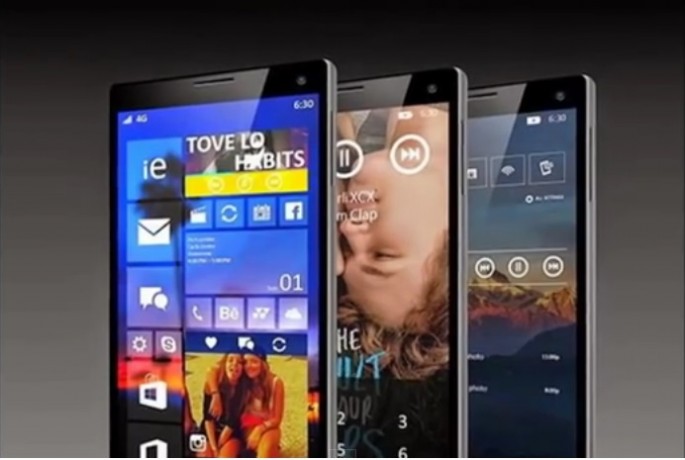Microsoft will reportedly replace its current Windows flagship phone, the Lumia 930, with two handsets – the Lumia 950 and the Lumia 950 XL. And the latest buzz from Asia indicates that the devices are packed with premium build and powerful specs.
Under the hood, according to Phone Arena, the main engine is of Snapdragon breed - a 6-core 808 for the Lumia 950 and an octa-core 810 for the 950 XL. The RAM provision for both is generous enough at an identical 3GB. Microsoft will also deploy 32GB of internal storage for the upcoming Lumias with support for extra memory.
The 950, the same report said, has a 5.2-inch display while its XL twin will boast of a supersized 5.7-inch screen profile. Both will render in 2K resolution and will share the same camera system - 20MP on rear and 5MP on front. The 950 XL, however, has the distinction of having three LED flash on the main.
And the phablet Lumia enjoys too a slight edge on battery, which is rated 3300mAh while that of the regular 950 will draw its juice from a 3000mAh energy pack. It is assumed that the new Lumia batteries are non-removable as the Phone Arena noted that 950 and 950 XL casings are of Full Metal finish in unibody design.
Now the specs mentioned so far are definitely in the upscale zone but one key detail that will caught the attention is the listing that out of the box, the two Lumias will automatically support Continuum through cable connection. This is hardly surprising as the 950 and 950 XL will surely unbox with Windows 10 Phone.
What is notable about Continuum? For the hybrid device like the Surface Pro 3, this new Windows feature is the tool that will seamlessly transform a tablet into laptop or desktop setting when connected to a compatible typing accessory - a keyboard dock or its Bluetooth counterpart. Continuum functions vice versa so when the keyboard is disconnected the Surface becomes a stand-alone tablet again.
But Continuum for Phones behaves differently or more appropriately - is more powerful as it can make an ordinary monitor, connected to a phone on Windows 10 Mobile, perform like a personal computer. "(Continuum) allows smartphones running Microsoft's latest OS to transform into desktop PCs - or at least an experience that's very close - when connected to larger screens," The Verge said in a report.
Continuum, the report added, is designed in support of Microsoft's thrust of creating a universal app platform or the rendering of applications to automatically adapt on the screen device that they run on, that is both in scale and functions. In short, Continuum has the power to deliver desktop-class computing performance and setting in a mobile package.
Potentially, with the feature on the Lumia 950 and 950 XL, these devices can easily kill the Surface Pro 4, the release date of which or at least its existence is yet to be confirmed by Microsoft.



























